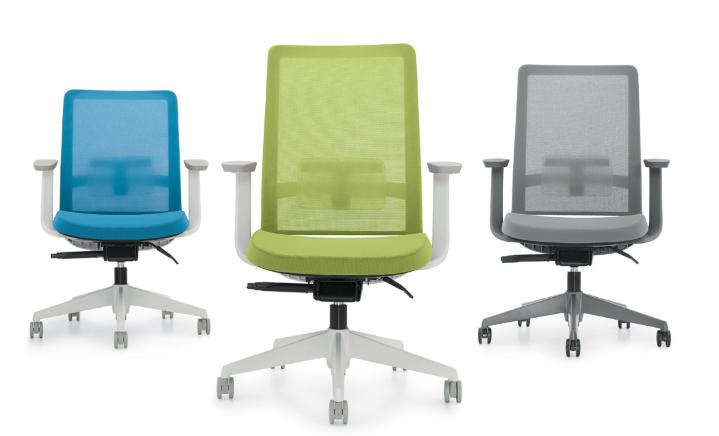Ergonomic office chairs make for a better work enviroment
October 16, 2019

You finally convinced your boss to get you an ergonomic chair for your workstation. It arrived two weeks ago and you’ve already noticed how much better you feel at the end of the day. The new chair allows you to focus on your work for longer periods and your back pain has started to improve. Your coworkers are noticing that you seem to be more engaged at work and your productivity is higher than it has been for the last several months. One of them asks what you are doing differently to get these results. You explain that your new ergonomic chair reduces your back pain so you can focus more on your work.
Ergonomic chairs are designed to help you sit comfortably for long periods of time while you work. They are more adjustable than standard office chairs and allow you to customize the fit to your body or seating preferences. These chairs can improve your productivity and enhance your job satisfaction, but they will also reduce your risk for musculoskeletal injuries such as back pain. There are five reasons that ergonomic chairs will reduce your back pain.
The most important reason that ergonomic chairs will improve your back pain is that they are designed to support your natural posture and to reduce stressful forces on your body. The chair backs are typically full length extending from your shoulders to the seat. There is a section in the lower part of the back that curves forward slightly to match the natural curve in your lumbar spine. This is often referred to as a lumbar support since is helps to protect the lumbar spine.
Adjustable armrests support your elbow and forearms as your arms hang naturally at your side. This allows you to use your keyboard and mouse without causing muscle fatigue in the shoulders and arms. Adjusting the seat height enables you to sit with your feet flat on the floor with your hips and knees flexed to approximately ninety degrees. Some ergonomic chairs have backs that can move forward or backward to shorten the depth of the seat to prevent the front edge from cutting into the back of your knees.
When you sit with posterior pelvic tilt (sacral-sitting), your lumbar spine flexes and your shoulders roll forward creating a slouched posture. In this position, your shoulder blades slide away from the thoracic spine and your head moves into a forward or protracted position. As you look up to see the computer monitor, your neck moves into extension and further exaggerates the forward head posture. This can lead to muscle guarding, pain, and headaches if you continue to work in this position.
Slouching can be caused by internal and external factors. Internal factors include limited hip flexion range of motion, tight hamstrings, obesity, and weak trunk (core) muscles that are unable to hold the spine upright against gravity. External factors are those outside of your body such as limitations of the chair design. These include seat depth that is too long or short, seat back that is too vertical, and armrests that are too low.
Ergonomic chairs may not be able to change your internal limitations, but they are specifically designed to correct the external factors. The adjustable seat depth and contour of the seat back support the lumbar spine, prevent slouching, and promote sitting in the proper position. Some chairs also allow you to adjust the angle, or tilt, of the seatback. Using a properly adjusted ergonomic chair will prevent slouching and forward head posture.
Many ergonomic chairs are made with higher quality materials than budget office chairs. The seat cushions and back cushions might be thicker or even contoured to improve the fit. Some ergonomic chairs have additional lumbar support built into the design. If you have shorter legs, you can lower the chair and slide the seatback forward to shorten the seat depth. The armrests can be raised to support your elbows if you have a long torso. The key to comfort is the ability to adjust nearly every component of the chairs to accommodate a variety of body types and sizes.
Final Thoughts
Ergonomic chairs can improve back pain by promoting a sitting posture that allows proper alignment of the shoulders, hips, and spine. This reduces abnormal strain on the body and prevents harmful positions such as slouching and forward head. The extensive adjustability of ergonomic chairs enables users to achieve a more custom fit than standard chairs. They can help with a wide range of musculoskeletal conditions including pain in the neck, mid-back, and low back. Although ergonomic chairs are typically more expensive that standard office chairs, they can have a huge impact on productivity and job satisfaction.